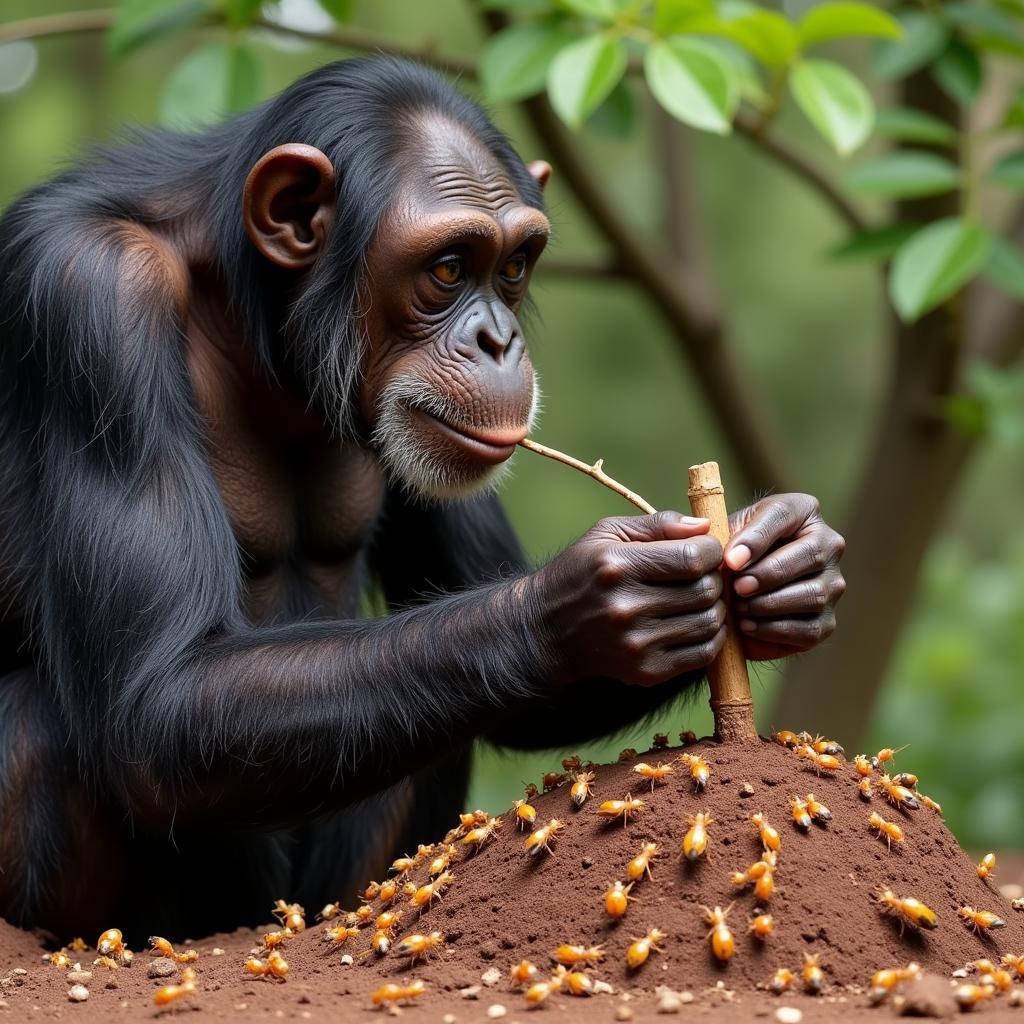Unveiling the African Chimpanzee Monkey: Our Closest Living Relative
The African Chimpanzee Monkey, more accurately known as the chimpanzee, holds a special place in our world. These fascinating creatures share about 98.7% of their DNA with humans, making them our closest living relatives. Found only in the wilds of Africa, chimpanzees captivate us with their intelligence, complex social structures, and remarkable resemblance to ourselves.
Delving into the Chimpanzee World: Habitat and Distribution
Chimpanzees are native to sub-Saharan Africa, primarily inhabiting dense rainforests, woodland-savanna mosaics, and even mountainous regions. Their distribution spans across countries like Tanzania, Uganda, and the Democratic Republic of Congo, with each region shaping their unique adaptations and behaviors.
Unraveling the Mystery: Chimpanzee vs. Monkey
While often mistakenly referred to as “African chimpanzee monkeys,” it’s important to clarify that chimpanzees are not monkeys. They belong to the ape family, Hominidae, along with gorillas, orangutans, and humans. This distinction is crucial in understanding their evolutionary history and unique characteristics.
Key Differences: Apes vs. Monkeys
- Tail: Apes, including chimpanzees, lack tails, while most monkey species have tails, often prehensile ones used for balance and grasping.
- Brain Size: Apes generally have larger brains relative to their body size compared to monkeys, contributing to their advanced cognitive abilities.
- Social Structure: Chimpanzee social structures are highly complex, often involving power struggles, alliances, and intricate communication systems.
A Day in the Life: Diet and Social Behavior
Chimpanzees are highly adaptable omnivores, consuming a diet that consists of fruits, leaves, insects, and occasionally meat. Their foraging techniques are often ingenious, using tools like twigs to extract termites from mounds and stones to crack open nuts. This tool use demonstrates their impressive problem-solving skills.
The Power of Community
Living in fission-fusion communities, chimpanzees experience fluctuating group dynamics. They engage in social grooming, strengthening bonds and resolving conflicts. Their communication is a complex mix of vocalizations, facial expressions, and body language.
 A chimpanzee using a tool to extract termites
A chimpanzee using a tool to extract termites
Conservation Concerns: Protecting Our Closest Kin
Sadly, chimpanzee populations face serious threats due to habitat loss, poaching, and disease. It’s our responsibility to protect these amazing creatures and ensure their survival for generations to come.
FAQs about African Chimpanzees
1. How long do chimpanzees live?
Chimpanzees have an average lifespan of 40-50 years in the wild.
2. Are chimpanzees endangered?
Yes, chimpanzees are classified as an endangered species by the International Union for Conservation of Nature (IUCN).
3. Do chimpanzees use language?
While chimpanzees don’t possess human-like language, they communicate through a sophisticated system of vocalizations, gestures, and facial expressions.
Exploring Further
For more captivating insights into the world of African animals, delve into these related articles:
Understanding and appreciating these remarkable creatures reminds us of the interconnectedness of life on Earth and the importance of safeguarding our planet’s biodiversity.
Need help planning your African wildlife adventure? Contact us at +255768904061, email us at kaka.mag@gmail.com, or visit us in Mbarali DC Mawindi, Kangaga, Tanzania. Our dedicated team is available 24/7 to assist you!

